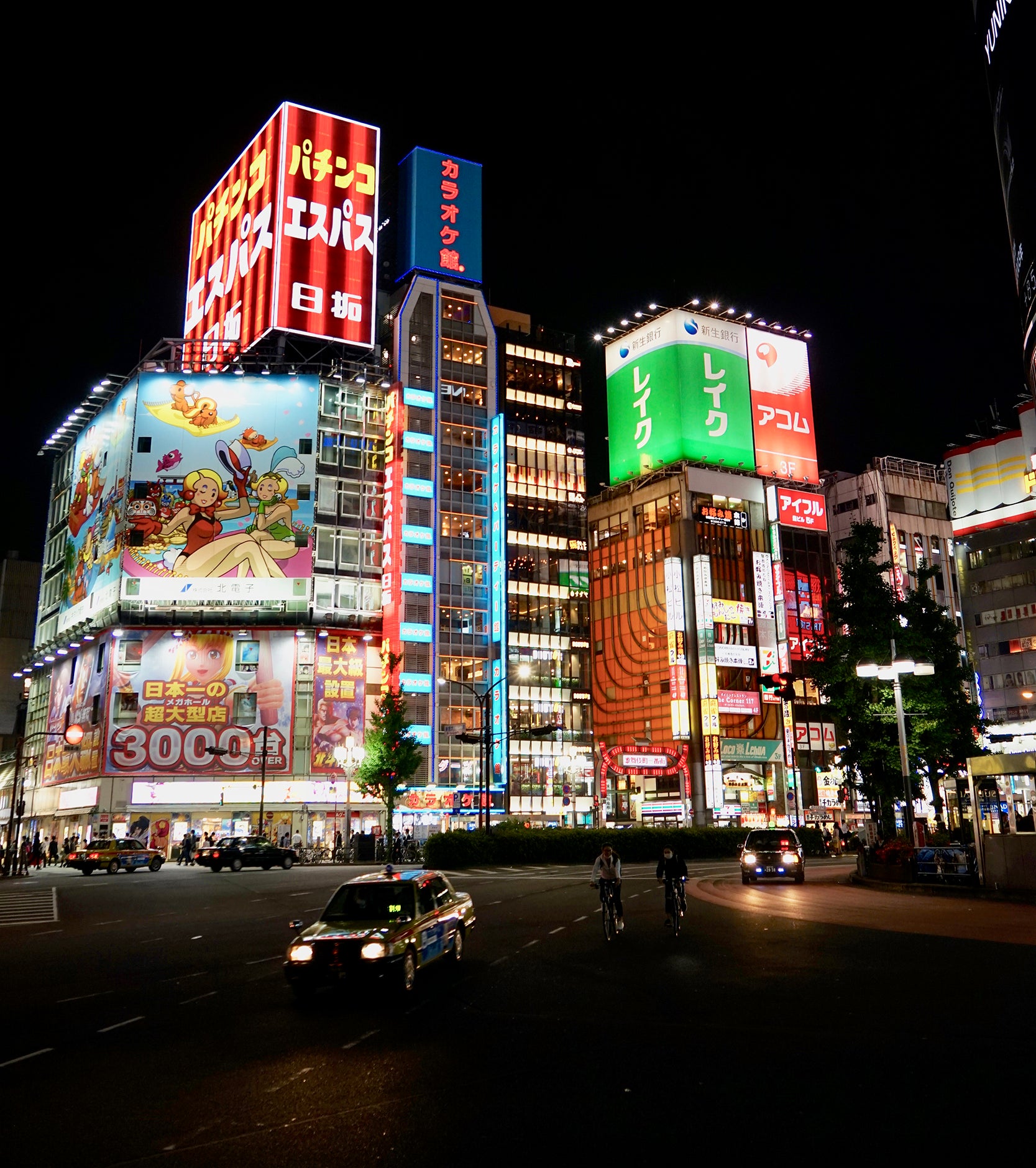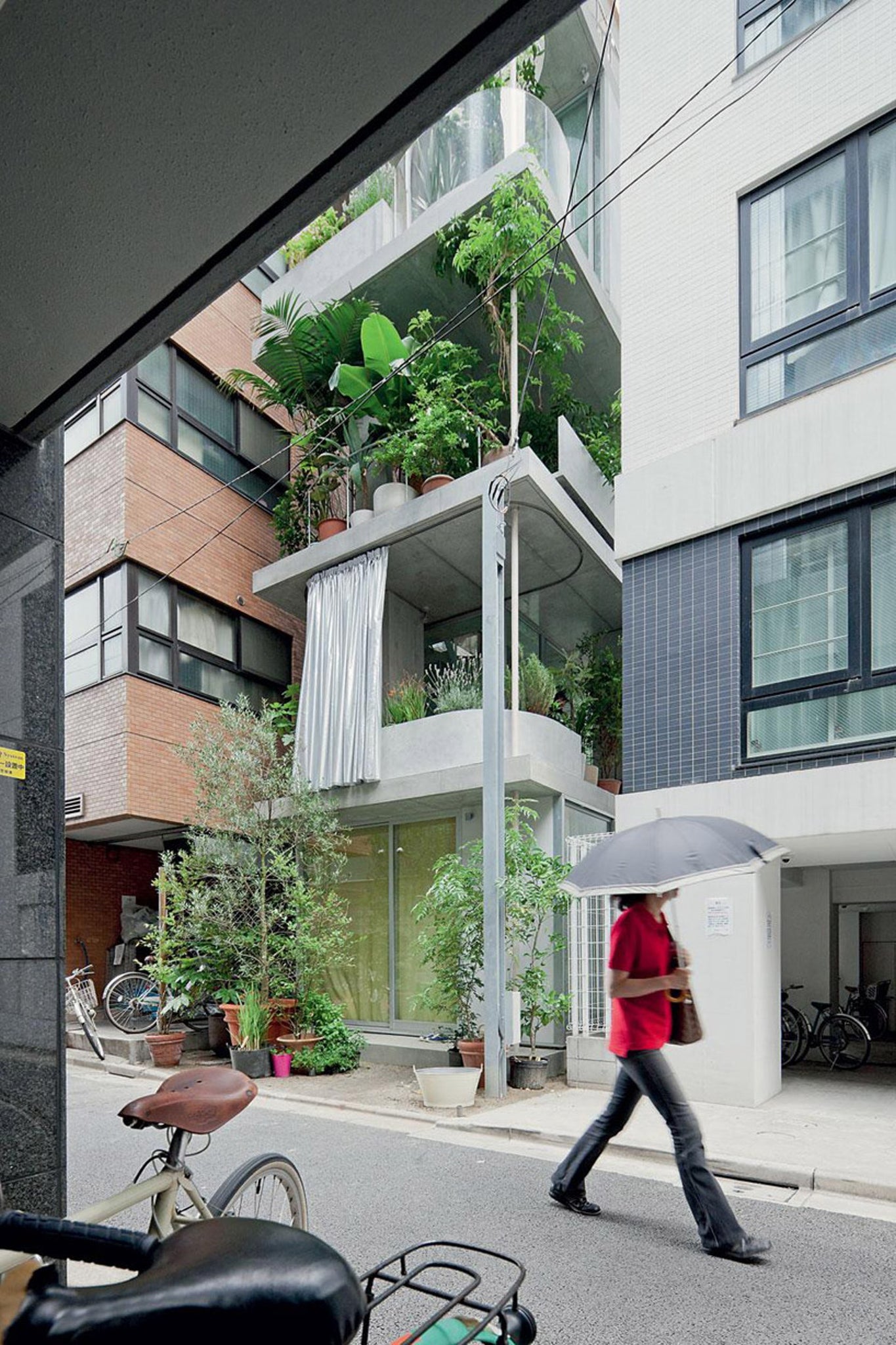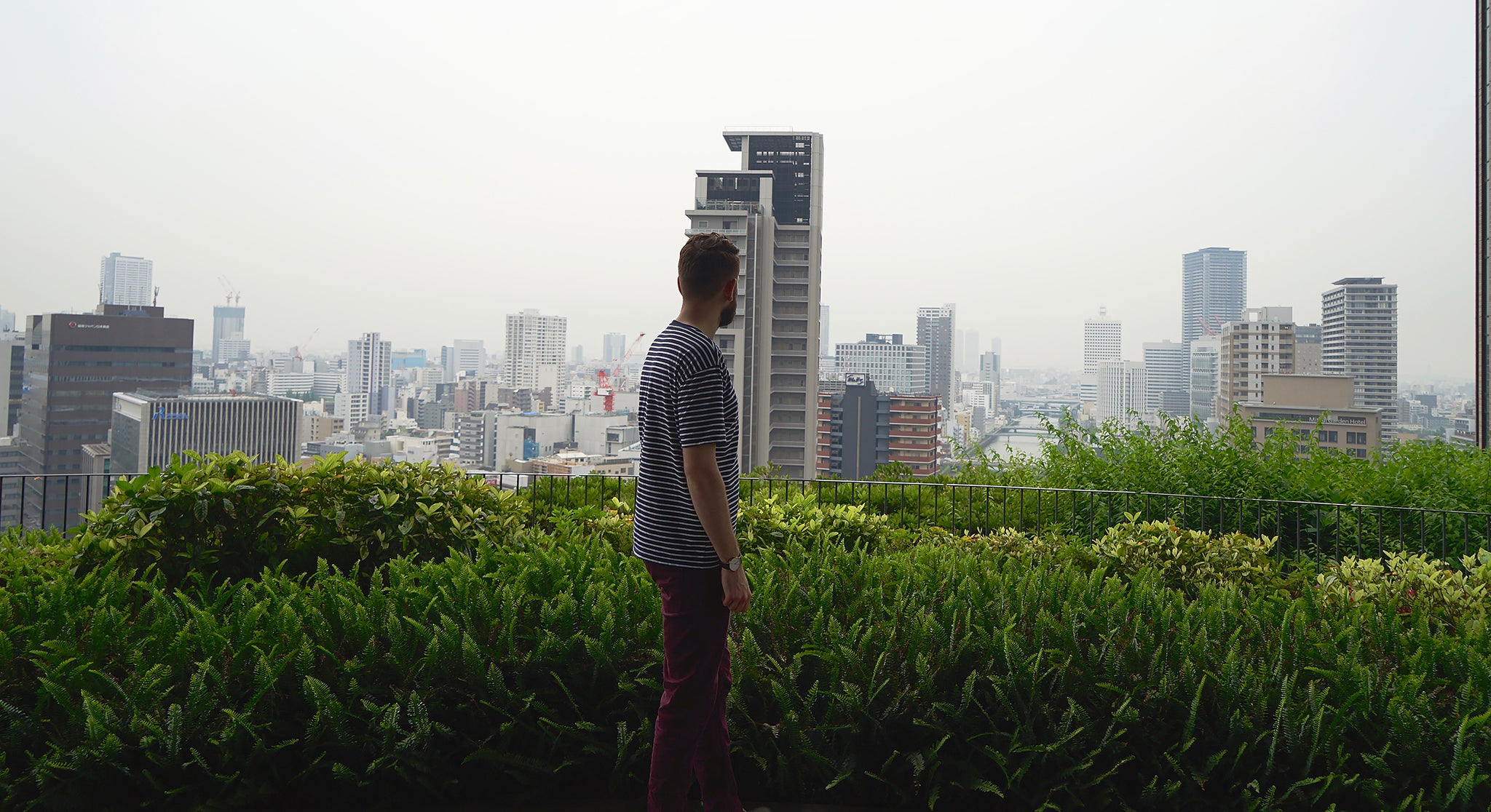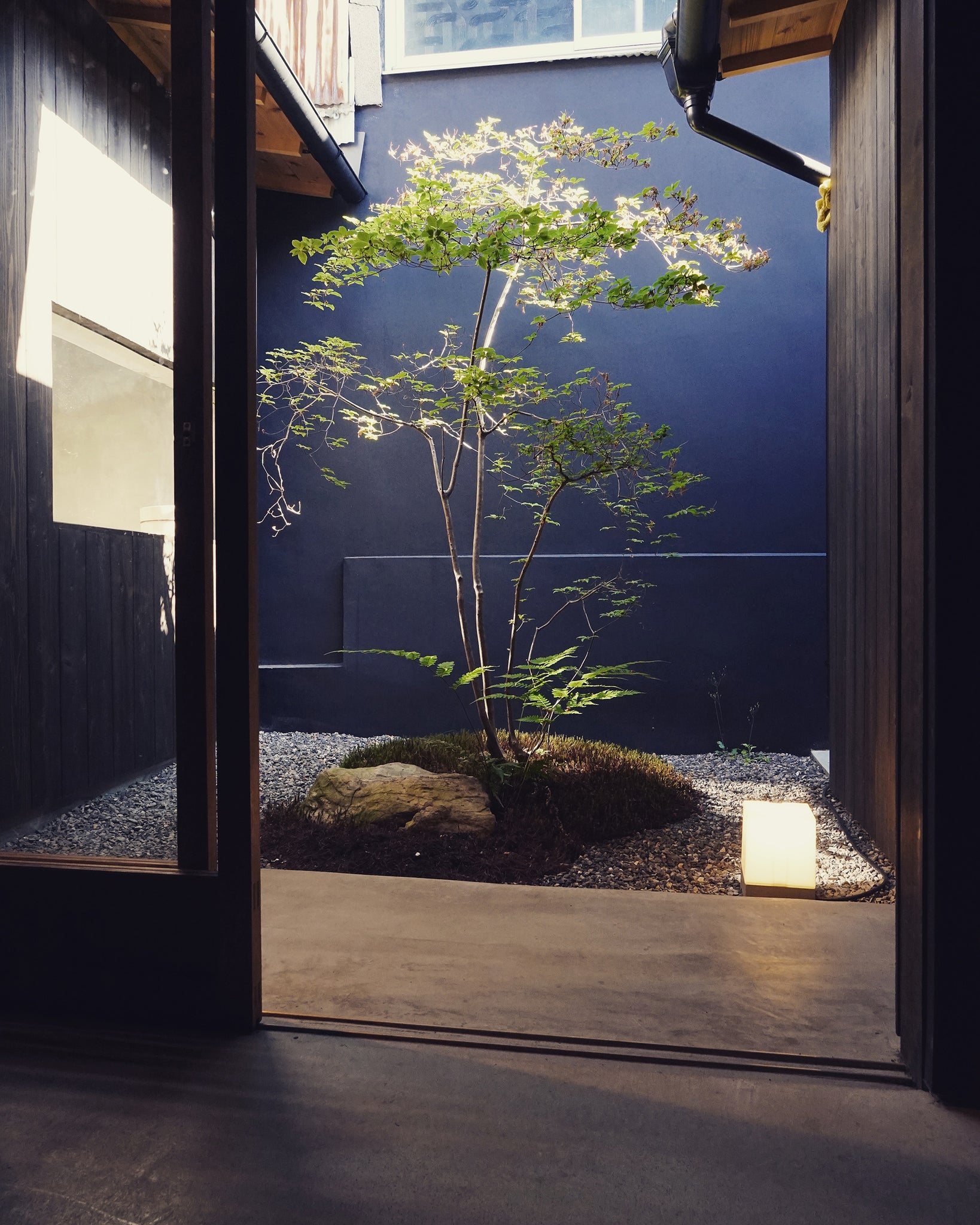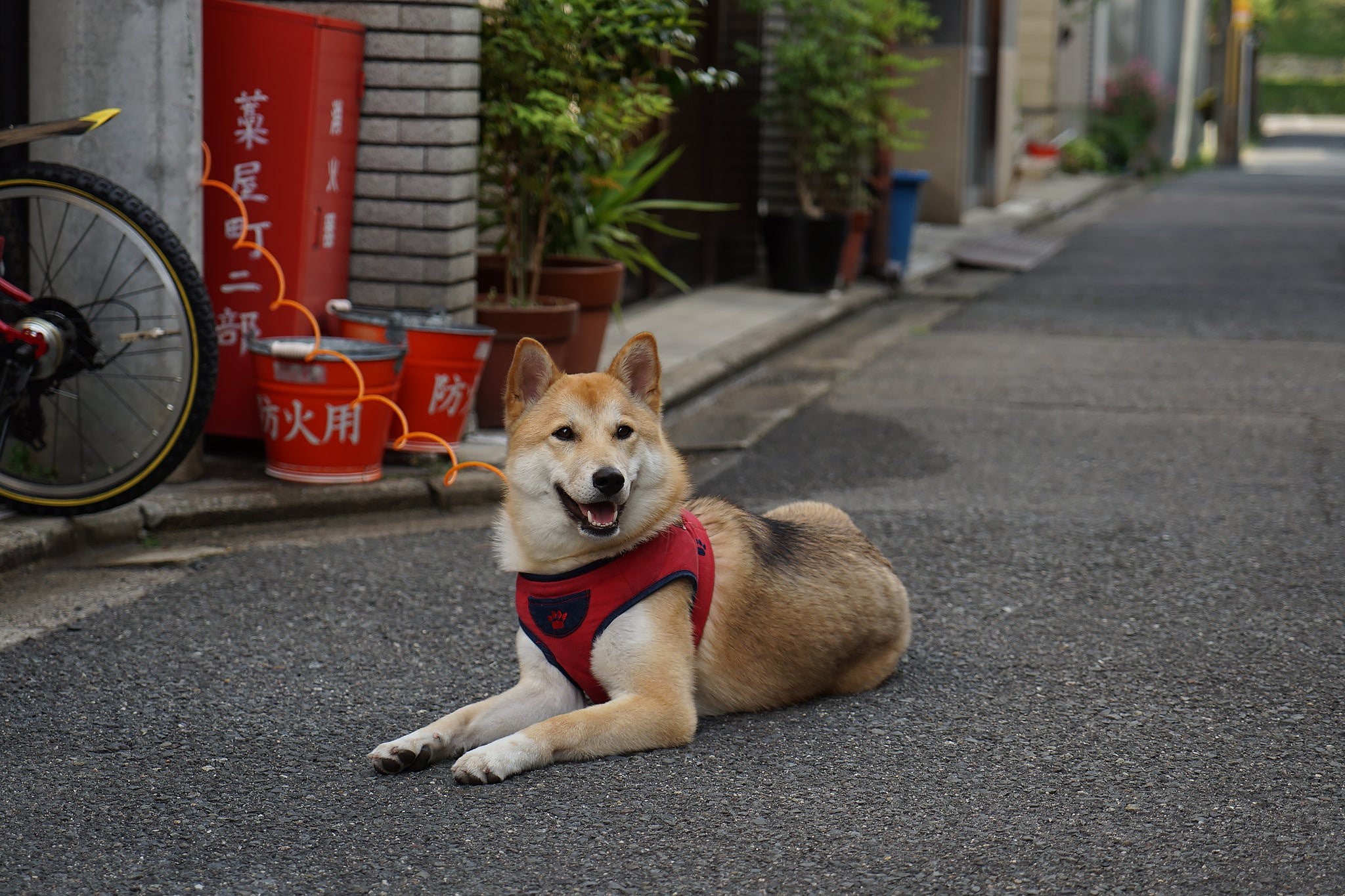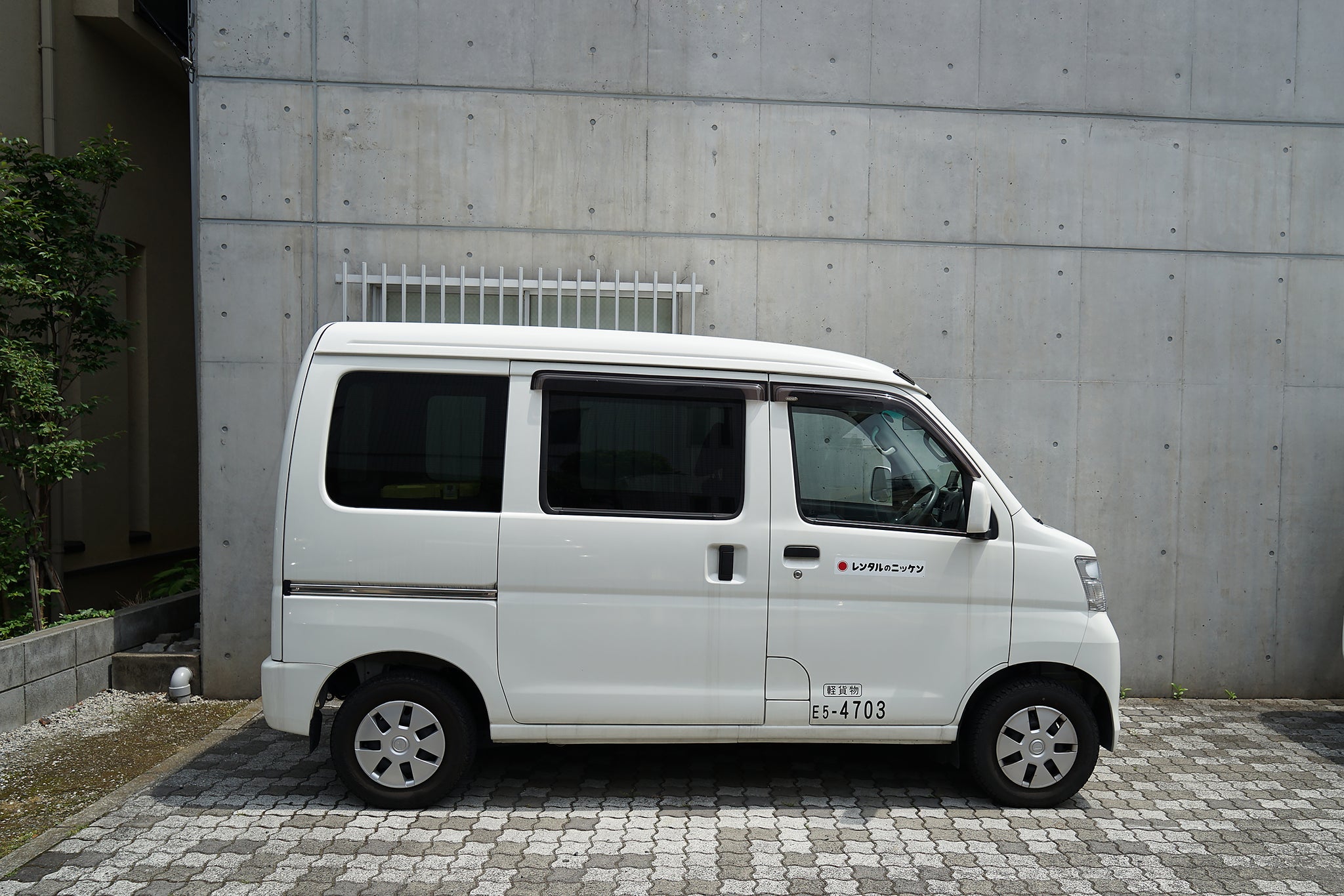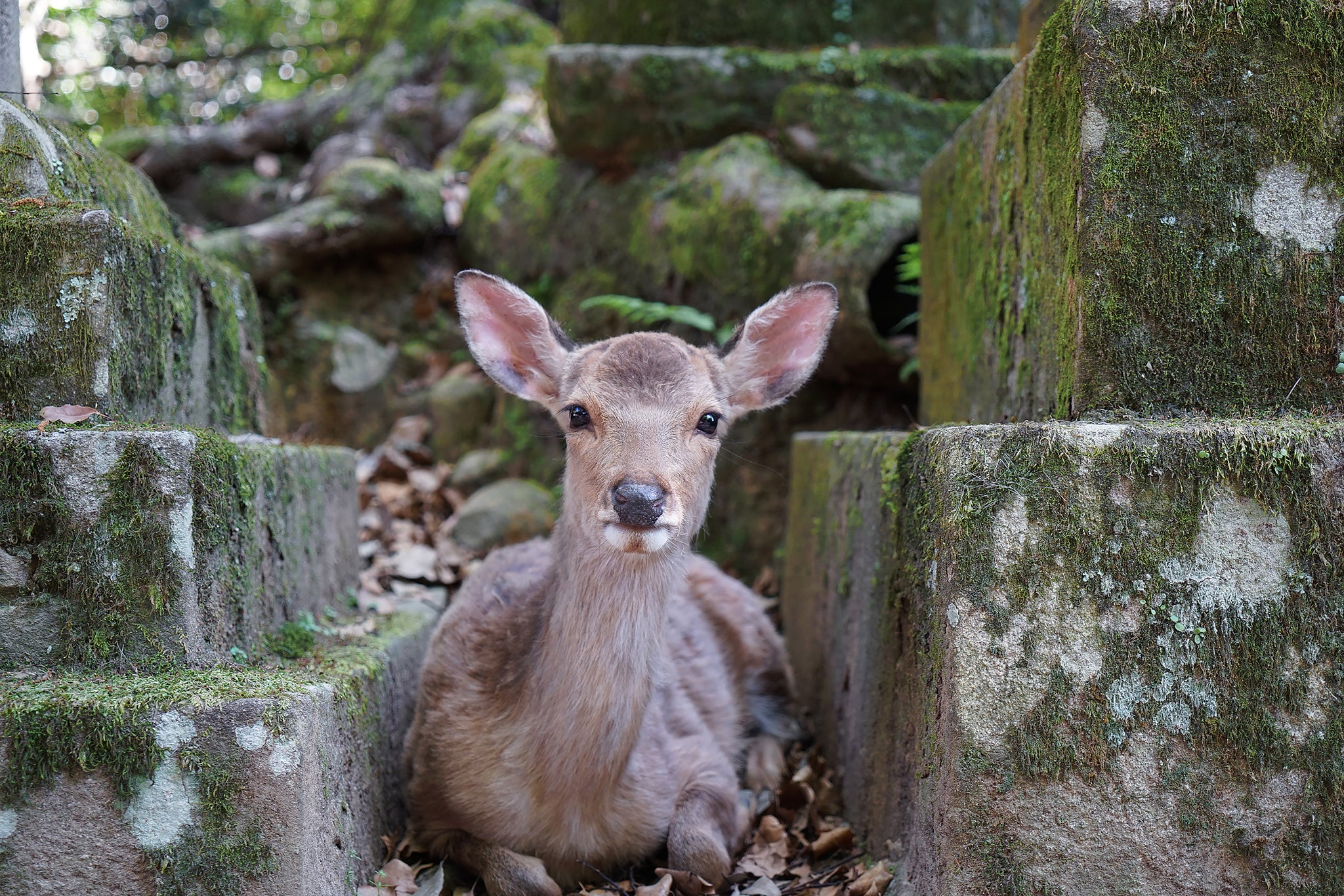Japan is a land of extremes: From the untamed wilderness of Hokkaido and subtropical islands of Okinawa to ultra-modern Tokyo - the biggest metropolis in the world. Tradition, nature and technology co-exist in this nation of islands, in a way that seems unimaginable in the western world.
Closed off for so much of its history, Japan has evolved completely independently from us and can feel like a parallel world. Much in its society is guided by 'Shinto', an ethnic form of religion but more a national way of thought. With Shinto, natural elements such as rocks, trees, rivers and animals are said to possess 'Kami', which roughly translates as 'spirits' in English. Kami are considered sacred and explains Japan's deep respect for the natural world. Linked to Shinto are also the ancient rituals which come with it; although diverse the practices share a common thread of care, time and aesthetics. This devoted appreciation of how something looks, is made or enjoyed has come to define their way of life.
For the creatively-minded individual Japan is almost a pilgrimage. A greater level of thought and design is apparent in almost everything that you interact with on a daily basis, be it the way a Bento (lunch) box is arranged, or the way cars have become square - to fit efficiently into their square shaped garages. This constant desire to perfect and improve is so interesting and provides stark contrast to Britain's nostalgic outlook. It's why we took a trip there earlier this year and we share with you a few of our thoughts in this journal article.
In Britain you would be forgiven for thinking our best days of residential design may be behind us. Many of us aspire to live in ageing Victorian houses and look back whimsically with faux-period furniture. Any modernity is for some reason often confined to the bathroom and kitchen, even then it is more than likely muddled in its approach.
Japan in comparison is a veritable conveyor belt of fashion and design; the populus is constantly in search of the new and the better. This way of thinking also extends to housing. In Tokyo the average house age is just 30 years old - Exorbitant inheritance taxes placed on properties along with aesthetically relaxed planning laws have culminated in the most diverse selection of Architecture ever seen.
Land in Tokyo is many times more valuable than the house upon it, which inevitably means that once a house is inherited it is demolished to make use of new advances in building. Even if someone buys a house and and finds it not to their taste, it too is demolished. It may seem wasteful but there is an upside - it has enabled Architects to have complete freedom of expression. In Tokyo, Architects have the ability to create a property that truly utilises its situation and responds to its clients lifestyle.
Like in many big cities, space is hard to come by. If there is an available plot to build on, then it is more than likely that it will be an irregular shape, overlooked or compromised in some other way. This doesn't seem to faze Tokyo's residents though, they simply hire an Architect to design their way out of the problem. Without a myriad of building restrictions and decision making by local councils the Architect's job is much simpler. They of course have to prove that the building is structurally safe and does not block too much light to the street, but without having to design around planning obstacles, the whole process is faster and cheaper for clients to afford. In essence the Architect in Japan gets to do more of the 'fun stuff' that would often be coordinated by a Designer or Stylist if you lived in the UK.
When it comes to interior spaces, efficiency is paramount. The Japanese invented open-plan living a long time ago with a simple idea - multi-purpose spaces which can be divided off or opened up using sliding doors. When western modernists Charles and Ray Eames, Walter Gropius, Frank Lloyd Wright and Le Corbusier travelled to Japan in the mid-twentieth century they were astounded. They discovered housing with floor to ceiling windows and large light-filled expanses. Modernism already existed on the other side of the world, it just happened to be hundreds of years old.
100 years ago 85% of Japanese people lived in large rural dwellings and had a strong connection with nature. Even the houses were designed to mimic a tree; the roof was light like branches and the raised floors were rooted to the ground with solid trunk size sections. Buildings were assembled by master craftsmen using no glue and no nails, just ingenious self-supporting joinery techniques.
Move forward to today and the vast majority of Japanese people now live in small urban spaces. The desire to connect with nature still persists though, albeit in a more compact form, with home owners dedicating precious space to nature. Whilst we were in Kyoto we stayed in a small house with a total floor space under 40 Square Metres. Despite its diminutive size, the owners (or designer) decided to create a tiny central courtyard with a mini moss garden and cherry blossom tree. The dining space, bathroom and WC wrap around the tree in a U-shape, giving views of the garden from every room on the floor.
As we mentioned earlier the Japanese believe trees and therefore wood to contain a spiritual essence. Whilst not every wooden item is crafted by hand, it is clear to see a greater affinity with the material in Japan. It is quite common to find items like bowls, cups and most furniture to be made solely from wood. Most are mass-produced but even then, the level of detail shows a great respect for this natural product. Carpentry is still a highly acclaimed craft, but the skills are demonstrated in a different way to how our carpenters have traditionally done so. Ornate carvings and reliefs are not important, it is the strength of the joining and the quality of the finish that is fundamental to their style. In Tokyo we visited the Muji flagship store, even here the factory made products have exposed joinery and ultra-smooth surfaces that suggest they are probably hand finished.
The perfect example of modern wood furniture is the brand Karimoku New Standard. KNS believe furniture should last at least as long as the tree it was made from. Creating their products almost exclusively from timber, KNS is an off-shoot brand from Karimoku - a company with over 70 years heritage in furniture making. Their aim is to produce innovative, joyful and functional objects that suit the new ways of urban living in the 21st century. Compare a Karimoku item with an alternative brand and you may begin to see the precision and refinement that sets Japanese craftsmanship apart.
Another handicraft that is venerated in Japan is the art of pottery, or simply making products from clay. Japanese ceramic products vary wildly but they all have a sense of experimentation and individualism. When you look at the vast array of glazes, colours and textures on display, it's distinctly different to the bland soulless products we are offered on the UK highstreet. Luckily more influence from Japan is now reaching our shores and shaking things up a bit. Designers like Reiko Kaneko, based in London and Studio Arhoj based in Copenhagen both take a lot of inspiration from Japan and combine with a European twist to create their designs.
When we were crossing over to Miyajima from Hiroshima we passed a small family pottery business on the coast. Here we managed to watch first hand as beautiful Sake jugs were crafted effortlessly. The perfect Sake jug is molded to sit in the palm of the hand and there is a single indent about halfway up. It looks a bit like a mistake but it is actually a place to put your thumb and get a better grip on the jug. Suffice to say we couldn't leave the store without taking one with us.
If you are in Tokyo and you want to buy some Japanese ceramics there is no better place than Kappabashi Street. Kappabashi-dori is Tokyo's 'Kitchen Town' - it's where restaurants and individuals alike go to buy knives, cookware and tableware. With over 180 stores you can spend all day here, but in typical Japanese fashion the stores have been super-organised and clubbed together to create a map. They have kindly colour coded the store types and even located similar product stores next to one another, the mind boggles!
Japan can seem so familiar but also so different. From an outsider's perspective it is a place full of order and a particular way of doing things, historical influences, modern advances and hospitality. One thing is clear however - In Japan there is a general appreciation of the essential components of design: aesthetics and function. Around every corner there is another way of doing something that you won't see in Europe. At the very least it will inspire and intrigue you. We personally think it's a magical place and we can't wait to go back.
Japan is a land of extremes: From the untamed wilderness of Hokkaido and subtropical islands of Okinawa to ultra-modern Tokyo - the biggest metropolis in the world. Tradition, nature and technology co-exist in this nation of islands, in a way that seems unimaginable in the western world.
Closed off for so much of its history, Japan has evolved completely independently from us and can feel like a parallel world. Much in its society is guided by 'Shinto', an ethnic form of religion but more a national way of thought. With Shinto, natural elements such as rocks, trees, rivers and animals are said to possess 'Kami', which roughly translates as 'spirits' in English. Kami are considered sacred and explains Japan's deep respect for the natural world. Linked to Shinto are also the ancient rituals which come with it; although diverse the practices share a common thread of care, time and aesthetics. This devoted appreciation of how something looks, is made or enjoyed has come to define their way of life.
For the creatively-minded individual Japan is almost a pilgrimage. A greater level of thought and design is apparent in almost everything that you interact with on a daily basis, be it the way a Bento (lunch) box is arranged, or the way cars have become square - to fit efficiently into their square shaped garages. This constant desire to perfect and improve is so interesting and provides stark contrast to Britain's nostalgic outlook. It's why we took a trip there earlier this year and we share with you a few of our thoughts in this journal article.
In Britain you would be forgiven for thinking our best days of residential design may be behind us. Many of us aspire to live in ageing Victorian houses and look back whimsically with faux-period furniture. Any modernity is for some reason often confined to the bathroom and kitchen, even then it is more than likely muddled in its approach.
Japan in comparison is a veritable conveyor belt of fashion and design; the populus is constantly in search of the new and the better. This way of thinking also extends to housing. In Tokyo the average house age is just 30 years old - Exorbitant inheritance taxes placed on properties along with aesthetically relaxed planning laws have culminated in the most diverse selection of Architecture ever seen.
Land in Tokyo is many times more valuable than the house upon it, which inevitably means that once a house is inherited it is demolished to make use of new advances in building. Even if someone buys a house and and finds it not to their taste, it too is demolished. It may seem wasteful but there is an upside - it has enabled Architects to have complete freedom of expression. In Tokyo, Architects have the ability to create a property that truly utilises its situation and responds to its clients lifestyle.
Like in many big cities, space is hard to come by. If there is an available plot to build on, then it is more than likely that it will be an irregular shape, overlooked or compromised in some other way. This doesn't seem to faze Tokyo's residents though, they simply hire an Architect to design their way out of the problem. Without a myriad of building restrictions and decision making by local councils the Architect's job is much simpler. They of course have to prove that the building is structurally safe and does not block too much light to the street, but without having to design around planning obstacles, the whole process is faster and cheaper for clients to afford. In essence the Architect in Japan gets to do more of the 'fun stuff' that would often be coordinated by a Designer or Stylist if you lived in the UK.
When it comes to interior spaces, efficiency is paramount. The Japanese invented open-plan living a long time ago with a simple idea - multi-purpose spaces which can be divided off or opened up using sliding doors. When western modernists Charles and Ray Eames, Walter Gropius, Frank Lloyd Wright and Le Corbusier travelled to Japan in the mid-twentieth century they were astounded. They discovered housing with floor to ceiling windows and large light-filled expanses. Modernism already existed on the other side of the world, it just happened to be hundreds of years old.
100 years ago 85% of Japanese people lived in large rural dwellings and had a strong connection with nature. Even the houses were designed to mimic a tree; the roof was light like branches and the raised floors were rooted to the ground with solid trunk size sections. Buildings were assembled by master craftsmen using no glue and no nails, just ingenious self-supporting joinery techniques.
Move forward to today and the vast majority of Japanese people now live in small urban spaces. The desire to connect with nature still persists though, albeit in a more compact form, with home owners dedicating precious space to nature. Whilst we were in Kyoto we stayed in a small house with a total floor space under 40 Square Metres. Despite its diminutive size, the owners (or designer) decided to create a tiny central courtyard with a mini moss garden and cherry blossom tree. The dining space, bathroom and WC wrap around the tree in a U-shape, giving views of the garden from every room on the floor.
As we mentioned earlier the Japanese believe trees and therefore wood to contain a spiritual essence. Whilst not every wooden item is crafted by hand, it is clear to see a greater affinity with the material in Japan. It is quite common to find items like bowls, cups and most furniture to be made solely from wood. Most are mass-produced but even then, the level of detail shows a great respect for this natural product. Carpentry is still a highly acclaimed craft, but the skills are demonstrated in a different way to how our carpenters have traditionally done so. Ornate carvings and reliefs are not important, it is the strength of the joining and the quality of the finish that is fundamental to their style. In Tokyo we visited the Muji flagship store, even here the factory made products have exposed joinery and ultra-smooth surfaces that suggest they are probably hand finished.
The perfect example of modern wood furniture is the brand Karimoku New Standard. KNS believe furniture should last at least as long as the tree it was made from. Creating their products almost exclusively from timber, KNS is an off-shoot brand from Karimoku - a company with over 70 years heritage in furniture making. Their aim is to produce innovative, joyful and functional objects that suit the new ways of urban living in the 21st century. Compare a Karimoku item with an alternative brand and you may begin to see the precision and refinement that sets Japanese craftsmanship apart.
Another handicraft that is venerated in Japan is the art of pottery, or simply making products from clay. Japanese ceramic products vary wildly but they all have a sense of experimentation and individualism. When you look at the vast array of glazes, colours and textures on display, it's distinctly different to the bland soulless products we are offered on the UK highstreet. Luckily more influence from Japan is now reaching our shores and shaking things up a bit. Designers like Reiko Kaneko, based in London and Studio Arhoj based in Copenhagen both take a lot of inspiration from Japan and combine with a European twist to create their designs.
When we were crossing over to Miyajima from Hiroshima we passed a small family pottery business on the coast. Here we managed to watch first hand as beautiful Sake jugs were crafted effortlessly. The perfect Sake jug is molded to sit in the palm of the hand and there is a single indent about halfway up. It looks a bit like a mistake but it is actually a place to put your thumb and get a better grip on the jug. Suffice to say we couldn't leave the store without taking one with us.
If you are in Tokyo and you want to buy some Japanese ceramics there is no better place than Kappabashi Street. Kappabashi-dori is Tokyo's 'Kitchen Town' - it's where restaurants and individuals alike go to buy knives, cookware and tableware. With over 180 stores you can spend all day here, but in typical Japanese fashion the stores have been super-organised and clubbed together to create a map. They have kindly colour coded the store types and even located similar product stores next to one another, the mind boggles!
Japan can seem so familiar but also so different. From an outsider's perspective it is a place full of order and a particular way of doing things, historical influences, modern advances and hospitality. One thing is clear however - In Japan there is a general appreciation of the essential components of design: aesthetics and function. Around every corner there is another way of doing something that you won't see in Europe. At the very least it will inspire and intrigue you. We personally think it's a magical place and we can't wait to go back.



